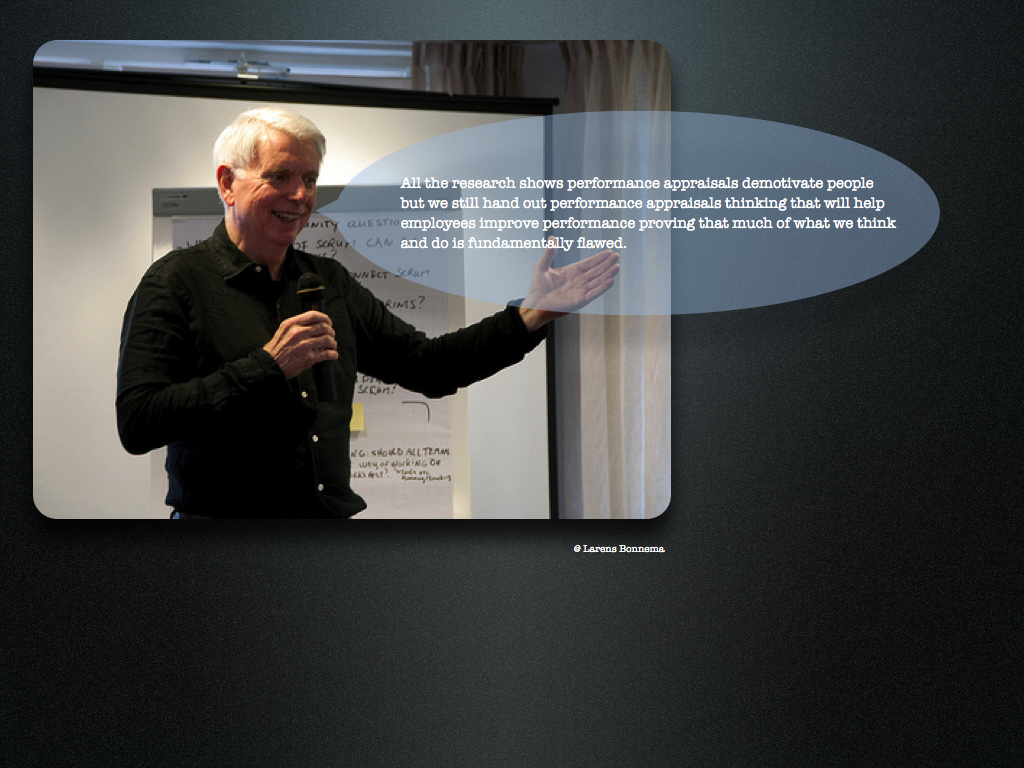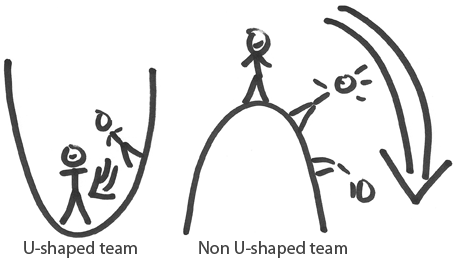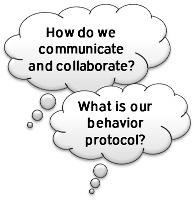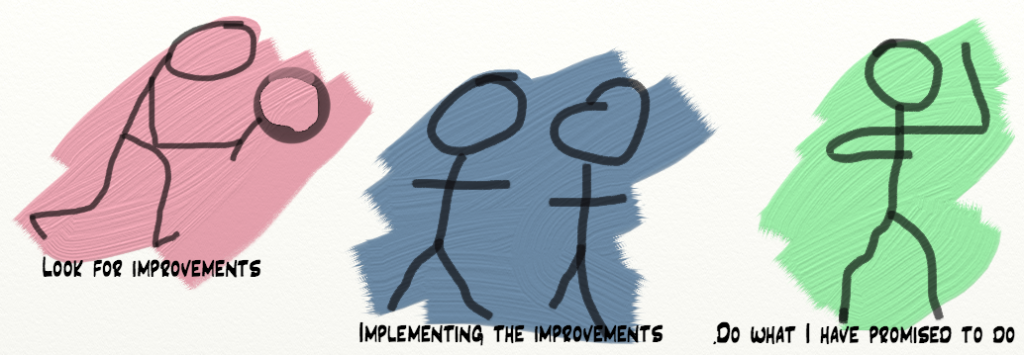Finns nu i bokform på Leanpub
Detta är den andra posten i en serie om agil HR “from the trenches”.
Del 1: Continuous investment
Del 2: Lägg ner utvecklingssamtalen
Del 3: Lön är rättvis ersättning – inte belöning
Del 4: Släng titlarna
Del 5: Ny kunskap – ett gemensamt ansvar, avsnitt 1
Del 6: Hitta rätt folk – släpp dem lös
Lägg ner utvecklingssamtalen
Första gången jag hörde någon på allvar utmana utvecklingssamtal var på ett seminarie med Jeff Sutherland (Scrums fader). Jag tror det var 2007 eller möjligen 2008. Jag hade då erfarenhet av att sitta i bägge ändarna av utvecklingssamtal.

Som medarbetare kunde jag inte minnas ett enda sådant utvecklingssamtal som verkligen varit meningsfullt. Några hade möjligen varit harmlösa och trevliga samtal, men åtminstone ett par av dem hade varit direkt demotiverande och framförallt minskat mitt förtroende för samtalspartnern: min chef.







